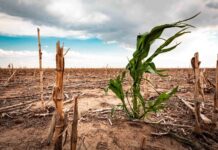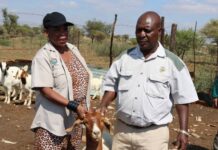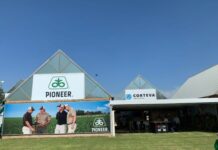By Paul Makube, Senior Agricultural Economist at FNB,
Recent rains in some parts of the country have renewed hope of a normal season after weeks of heat, dryness and decreasing dam levels.
While the overall dam levels for the country remain above 60% at 62% full during the week ended 21 October 2019, some provinces such as Gauteng are facing water restrictions due to higher temperatures and the decline in water levels in critical dams.
Water levels in the Vaal dam, a major supplier to Gauteng, dropped to 49.6% full, relative to 85.7% last year.
The situation is compounded by the closure of the Lesotho Highlands Water tunnel for maintenance until the end of November and the fact that the Katse and Mohale dams reached a record low of 13.6% and 32.7% respectively.
In contrast, the Sterkfontein dam is sitting at good levels of 91.5% full, relative to the 94.4% achieved during the same period last year.
Elsewhere, slight rains in Mpumalanga still bode well for the season as the planting window has already opened from 01 October. The province has received near-normal rainfall during the last three months with September alone being above-normal. This bodes well for summer grains and oilseeds as the planting window is from the 1st of October and ending 15 November and 10 December respectively for the cold and high temperate regions.
Although all provinces are currently above 50% full, with the lowest being Limpopo (LP) and the Eastern Cape (EC) at 51.6% and 50.5% respectively, some critical dams for irrigation such as the Middle-Letaba and Tzaneen are extremely low at 3.3% and 6.8% respectively and good rains are needed urgently to salvage the situation.
Further, 50% of dams in LP have reached a level below 50% full, while 11 dams in the EC are lower than 20% with four already empty. The province’s two major dams, Darlington and the Kouga, have decreased further week on week (w/w) and still below the 50% mark at 36.3% and 36.6% respectively full.
The latest assessment of the rain for the three-month period from July to September 2019 shows a weak start to the 2019/20 crop season. The period was characterised by below-normal rainfall for the country, but a few isolated areas received near-normal rainfall except over the Free State and Gauteng according to charts from the South African Weather Service (SAWS).
The rest of the country is still waiting for decent rains that would ensure a good crop but also improve pasture conditions for livestock and alleviate pressure on irrigated and dryland fruit and vegetables.
Drought conditions persist in some areas of the country – parts of the Northwest, the Northern and Eastern Cape provinces where livestock turnoff has been high. Except for the Pongolapoort and the Vaal, the country’s top 10 dams by capacity were above 60% full, with the Theewaterskloof and Vanderkloof dams reaching 69.3% and 80.1% full respectively.
In the WC, citrus supporting dams that reached good levels were Berg River, Buffelsjags, and Clanwilliam at 99.4%, 98.6% and 80% full, respectively. The Brandvlei dam was however closer to the 50% level at 53.8% full.
The short to medium term rainfall outlook still indicates that we have a long way to go for the new crop season. The rainfall forecast for the next two weeks shows rainfall prospects for the interior provinces of FS, NW, GP, LP and MP in the region of 18mm to 35mm of rain. Light showers are also expected for the coastal areas of the Western Cape, and KZN.
It is still a long way into the summer rainfall season and we hope for the rains to materialise and help break the drought particularly in the Northern Cape.









